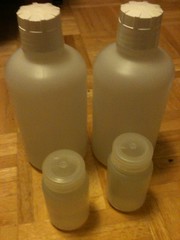 The
U.S. Army Corps of Engineers (USACE) didn’t know there was
a large water problem hereabouts, but now they do, and they want
to take a watershed-wide approach, from the headwaters to the Gulf of
Mexico, including both surface water and aquifer issues,
perhaps starting with redrawing FEMA’s flood maps,
and maybe even including once again funding the state water council.
The
U.S. Army Corps of Engineers (USACE) didn’t know there was
a large water problem hereabouts, but now they do, and they want
to take a watershed-wide approach, from the headwaters to the Gulf of
Mexico, including both surface water and aquifer issues,
perhaps starting with redrawing FEMA’s flood maps,
and maybe even including once again funding the state water council.
 Thursday 11 April 2013 there was a rather large governmental meeting
organized by USACE in response to
the City of Valdosta’s request of 11 March 2103.
Yesterday,
Valdosta City Council District 5 Tim Carroll sent the appended
list of attendees, augmented by a conversation with him on the phone just now.
We know little else, because no media or private citizens were invited.
Thursday 11 April 2013 there was a rather large governmental meeting
organized by USACE in response to
the City of Valdosta’s request of 11 March 2103.
Yesterday,
Valdosta City Council District 5 Tim Carroll sent the appended
list of attendees, augmented by a conversation with him on the phone just now.
We know little else, because no media or private citizens were invited.
- USACE Savannah office: Jeff Morris, Georgia Silver Jackets Coordinator and Beth Williams, Hydraulic Engineer
- USACE Jacksonville office: David Apple, Chief, Watershed and Restoration Planning Section
- GADNR: Christopher Hill and Tom Shillock, GAEPD Floodplain Management Unit
- GEMA: Dee Langley, Planning Program Manager and Terry Lunn, Director, Hazard Mitigation Division
- GEMA: Gary Rice – Regional Field Coordinator
- USGS: Brian McCallum, Supv. Hydrologist/ADir and Keith McFadden, Physical Scientist
- FEMA Region 4: Susan Wilson, CFM, Floodplain Management and Insurance Branch Chief and Janice Mitchell, Insurance Specialist and Lender Compliance
Those state and national agencies were brought by:
Continue reading

